Working Papers Collection
The Working Papers Collection feature empirical findings from the Connect2Aspire project, embedded by essential literature on aspirations, communication, and museum education/cultural engagements.
Working Paper 1. The Art of (Re) Engaging the Young Learner. Insights from Informal Learning Workshops Run by the V&A Museum
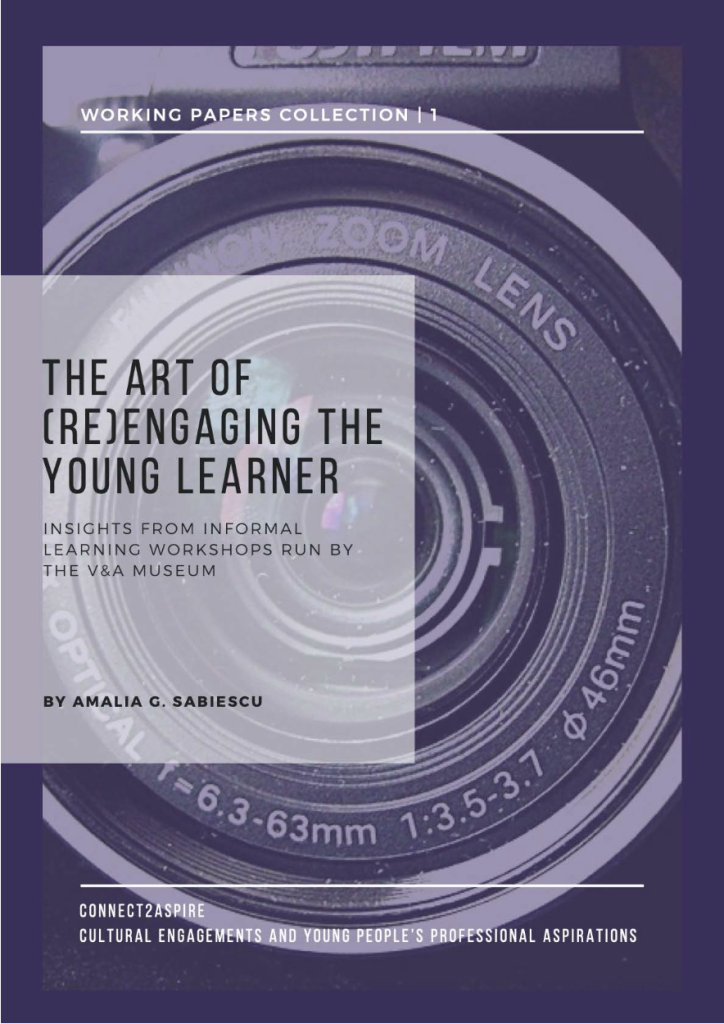
This first working paper of the AHRC ECR Leadership Fellowship/UKRI Innovation Fellowship Connect2Aspire: Cultural Engagements and Young People’s Professional Aspirations focuses on the role of museum learning for young people from disadvantaged backgrounds, not in education, employment and training, or who may otherwise have had disappointing experiences with formal education. It looks at how museums may kindle or rekindle a double connection: with museums as places of inspiration, knowledge exchange and skill building; and with education as a process that includes but goes beyond learning in schools.
Working Paper 2. Developing Aspirations through Social Assemblages. Towards a conceptual model
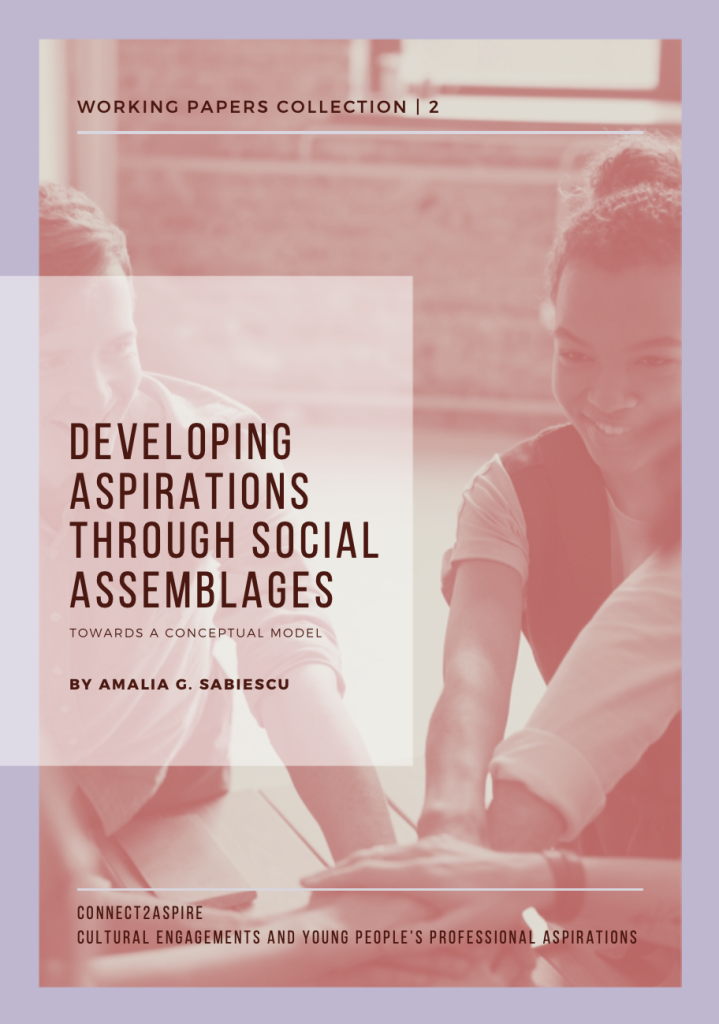
The conceptual model of aspirations development described in this working paper has been shaped in the AHRC Fellowship Connect2Aspire, building on insights from a series of projects that I have been involved in since 2013. The model is still work in progress, and it continues to be shaped through new data analysis from the Connect2Aspire research. The original perspective that this study brings comes from interpreting aspirations in an ontological and epistemological framework drawing on assemblage theory, as expounded by Gilles Deleuze, Félix Guattari and most recently Manuel DeLanda. Assemblage theory lends important insights for interpreting the formation of aspirations, including: the formation of identity; the relation between being in certain assemblages and competence building; how agency is distributed in an assemblage; and how aspirations are built by interacting with different assemblages, under certain conditions.
Working Paper 3. Museums and Young People’s Creative Career Choices. Young People Profiles and Information Needs
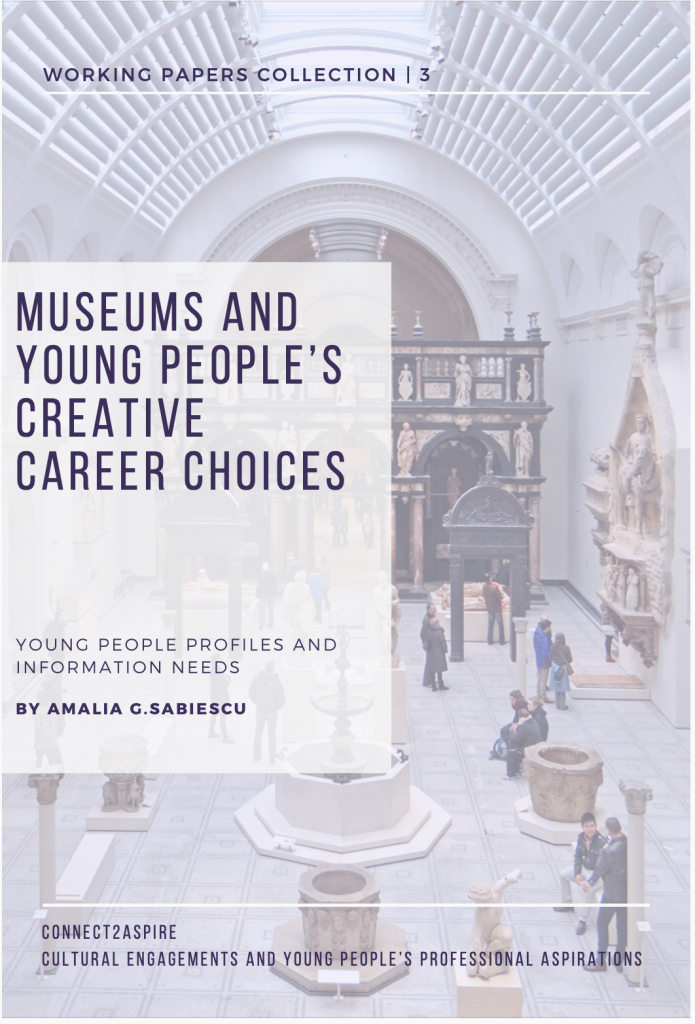
This working paper examines the information and support needs experienced by young people who are choosing creative career pathways, and the role that museums may potentially play in filling these needs. Based on a 3-year study on the Victoria and Albert Museum’s Young People’s Programme, the paper provides information about the process of career choice, influencers and needs. On this basis, it offers an in-depth and structured look at young people’s career choice and support needs, by identifying five profiles or personas representing young people with similar or close characteristics regarding decision-making and the career progression stage in which they find themselves. The five personas – The Selector, The Multifaceted Creative, The Decided, The Switcher and The Explorer – can be used for designing or testing the relevance of future informative and guidance programmes for young people interested in creative careers.
Working Paper 4. Aspirations Mapping and Participatory Photography
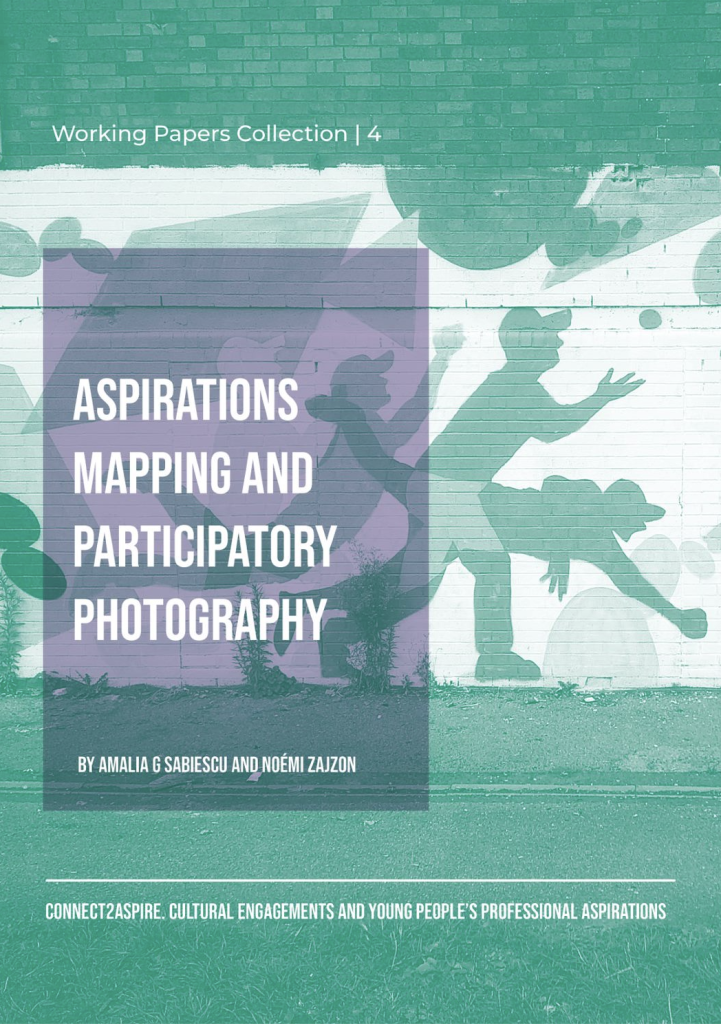
This working paper investigates the role of participatory photography for engaging young people in deep, reflexive explorations of their aims and aspirations and how these are contextualised in the socio-cultural and economic environments that they are inhabiting. The main purpose and contribution of this paper is methodological: based on an analysis of using participatory photography with young Roma migrants, it offers a series of lessons learnt that speak to both the value and the limits of integrating it as a technique in applied community-based research with young people. The paper should be read in conjunction with another project output, namely the Connect2Aspire Aspirations Mapping Toolkit strand on Aspirations Mapping and Creative Expression. The toolkit offers an approach and support materials for engaging young people in a process of mapping emerging life and career aspirations through participatory photography and zine making. Participatory photography is used in the first stage of the process, for generating visuals following an open yet guided process by which young people are invited to use the camera to explore specific aspects of their social and cultural environment that bear upon the formation of their aspirations or affect the likelihood of seeing them come to fruition.
Working Paper 5. Aspirations Mapping and Communicative Ecologies
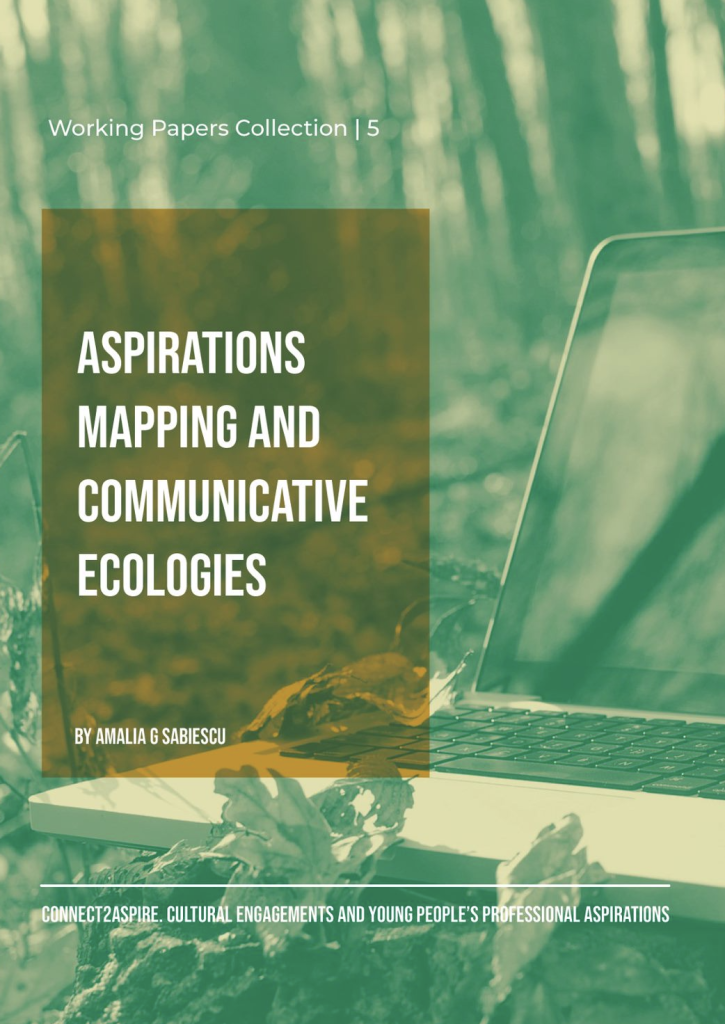
This working paper contextualises a methodological approach for engaging young people in a self-reflective exercise on their life and career aspirations, by highlighting the role of communication and social networking in their development. This method is outlined in the Connect2Aspire toolkit strand ‘Aspirations mapping and communicative ecologies’, which has been designed based on a thorough mapping of available theoretical literature on the role of communication in aspirations development; interweaved with empirical research conducted in the Connect2Aspire study. This paper provides an overview of the theoretical framework underpinning the relationship between communication and aspirations in the first part; and in the second part follows the integration of these insights in the workshop-based format for aspirations mapping, with its three steps: Explore, Envision, Connect.
There was a problem loading the content, please login to refresh.